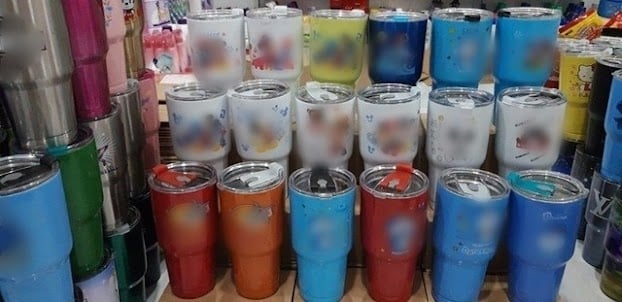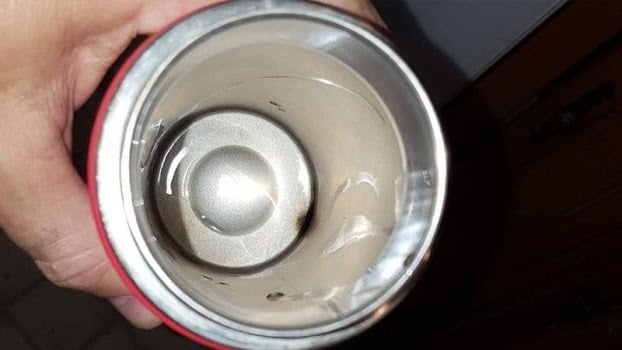## Warning About the “Deadly Cup”: Especially Dangerous for Your Health
Beware the “Deadly Cup”: A Serious Health Hazard
In a recent expose, the Beijing Consumer Association (China) revealed a shocking case, dubbed the “deadly cup.” Posing as consumers, the association’s staff randomly purchased 50 vacuum flasks from various brands, including those from shopping malls, consumer stores, and online platforms.
These flasks were then sent to professional testing agencies for rigorous trials. The results were alarming: out of the 50 samples, a staggering 19 failed to meet safety standards, amounting to a 38% failure rate. This exposed the grave issues surrounding the quality of vacuum flasks currently on the market. Specifically, these failing flasks contained excessive levels of heavy metals, akin to ticking time bombs threatening consumers’ health.

When vacuum flasks are subpar, heavy metal ions can leach into the water and subsequently enter the body when consumed. These metals have detrimental effects on health. Specifically, high levels of nickel can trigger allergies, damage the skin and respiratory system, and even increase the risk of cancer. Meanwhile, excess manganese directly impacts the nervous system, potentially leading to memory loss, depression, and other neurological issues.
Some consumers who have used low-quality vacuum flasks for extended periods have started exhibiting symptoms like loss of appetite, weight loss, and mental fatigue. Medical examinations revealed elevated levels of heavy metals in their bodies, causing damage to vital organs like the liver and kidneys. This underscores the severity of the harm caused by using non-compliant products.
The root cause lies with unscrupulous merchants who use substandard materials to maximize profits and cut costs. There are two types of stainless steel on the market: industrial and food-grade. Industrial-grade stainless steel, such as types 201 and 202, contains high levels of manganese and has poor corrosion resistance. It is unsuitable for lining vacuum flasks that come into direct contact with food. However, unethical businesses use this type of steel, resulting in excessive heavy metal content.
Food-grade stainless steel, such as types 304 and 316, offers superior corrosion resistance and stability while preventing heavy metal precipitation. Type 304 contains 18% chromium and 8% nickel, providing excellent acid and alkali resistance. Type 316 enhances type 304 by adding molybdenum, further improving corrosion resistance.
However, due to the high cost of food-grade stainless steel, some merchants have substituted it with industrial-grade steel, posing a potential health threat to consumers.

Avoiding the “Deadly Cup”
Examining the markings on the flask is the crucial first step. Carefully inspect the label on the lining or packaging of the vacuum flask. Different labels have different meanings. SUS304 is a common type of steel known for its corrosion resistance and stability, making it safe for drinking water.
SUS316, an enhanced version of SUS304 with added molybdenum, is better suited for acidic beverages or prolonged use. Be wary of flasks without labels or unclear markings, as their materials may be of unknown origin, making it challenging to guarantee quality and increasing the risk of excessive heavy metal content.
Assessing the flask’s quality through sensory perception and smell is also simple and effective. A higher-quality vacuum flask will generally feel more comfortable and heavier. Upon opening, there should only be a faint metallic scent, without any strange odors.
Of course, heat retention is another critical factor. To test for leaks, fill the flask with hot water, tighten the lid, and turn it upside down. Observe if any water droplets form around the lid. If no leaks are present, the flask has a good seal.
Testing the flask’s insulation capabilities is simple, too. First, fill the flask with hot water and tighten the lid. After some time, touch the outside of the flask. If it still feels cool or not warm, the flask has excellent insulation. However, if the surface is hot, it indicates poor insulation, which could signify a subpar or non-compliant product.
When you get a new flask, don’t use it right away. Instead, thoroughly clean it. Fill it with boiling water, secure the lid, and soak it for 15-20 minutes to sterilize it. Pay particular attention to cleaning the lid, and then you can use it with peace of mind.
When filling the flask, only fill it to 80-90% capacity. Never overfill it, as this can damage the flask and pose a safety hazard when opening, potentially causing scalding.
While glass flasks excel at heat retention, not all beverages are suitable for long-term storage. Nutritious drinks like milk and soy milk are prone to bacterial growth, and prolonged storage can lead to spoilage. Consumption may result in food poisoning symptoms like stomachaches and diarrhea. It is best to boil these beverages and consume them fresh.
Traditional Chinese medicines have complex compositions and can undergo chemical reactions at high temperatures and in humid environments, reducing their efficacy or generating harmful substances. They are also susceptible to bacterial and mold growth, making them unsuitable for long-term storage in flasks.
Brewing tea in a vacuum flask causes a significant loss of nutrients and aroma. The flavor and nutritional value diminish, and bacterial growth is more likely. It is preferable to use a teapot or glass to brew tea.
When purchasing a vacuum flask, carefully inspect the product labels and opt for reputable brands through authorized channels. When using a vacuum flask, follow the usage instructions, avoid storing certain beverages for extended periods, and regularly clean and sterilize the flask. Only through these diligent practices can we steer clear of the “deadly cup” and transform our flasks into reliable companions for a healthier lifestyle.
The Tuber with the Highest Microplastic Content: Unknowingly Consumed by Many Vietnamese Daily
Recent studies have revealed a shocking truth: carrots, the humble root vegetable, are laden with microplastics. These tiny plastic particles, invisible to the naked eye, have infiltrated our food system and could potentially impact our health. This eye-opening discovery sheds light on the pervasive nature of plastic pollution and raises concerns about the unseen dangers lurking in our everyday lives.



































